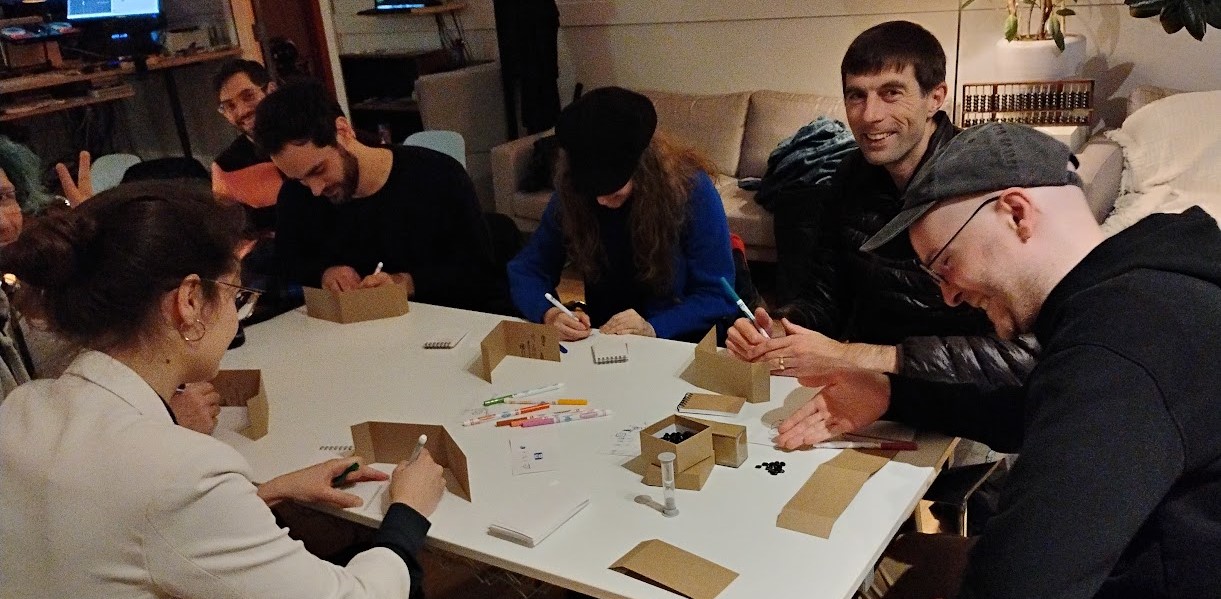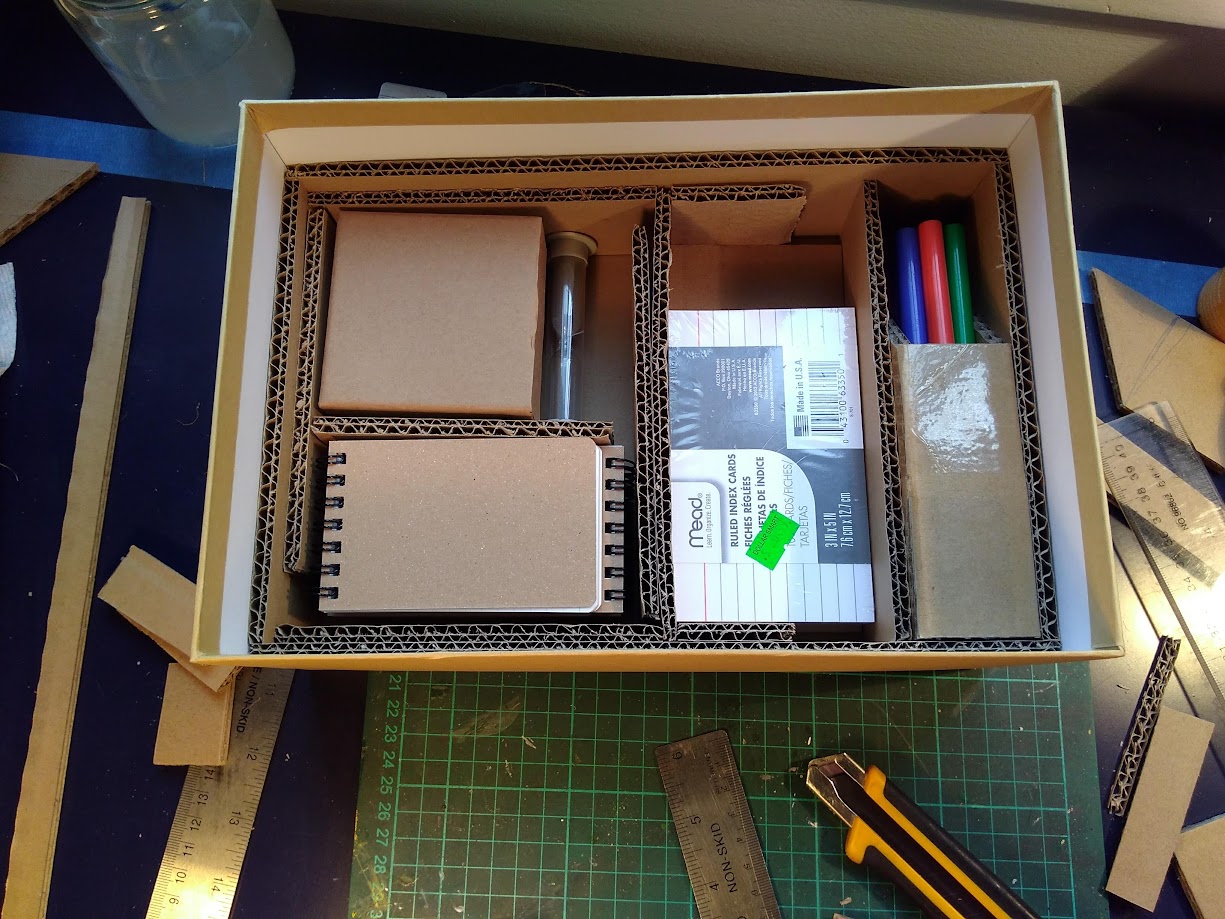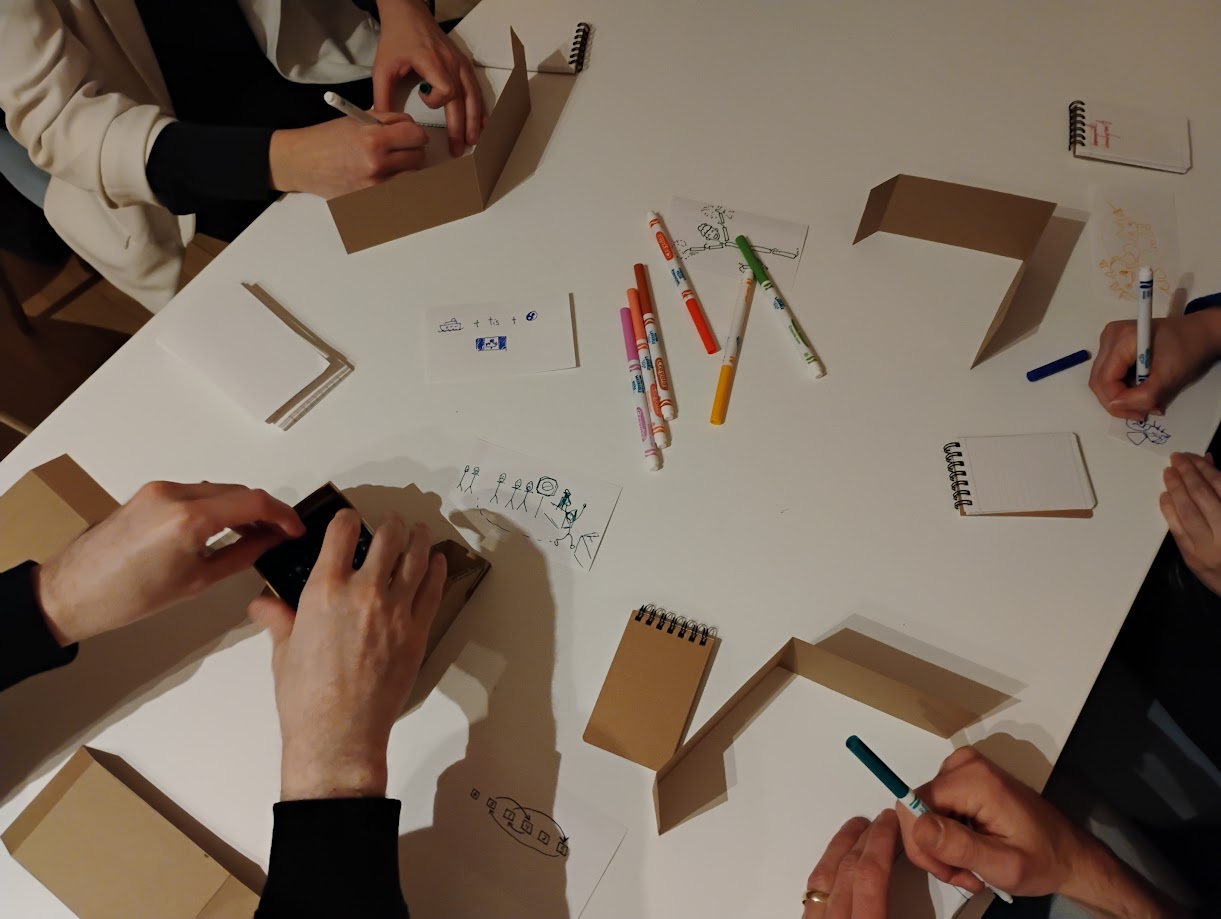DRAW FOR BEANS
A riddle drawing game.
Global Game Jam 2014
Theme: "We don't see things as they are, we see them as we are"
Role: Designer/Prototyper
Engine: Physical Board Game

Jan.2025 - Friends at Full Indie plays Draw for Beans!
PIVOTING TO PAPER
Motivated by the then recent success of “Draw Something”, a teammate in the group that I had joined at GGJ 2014 was eager to recreate that success with a similar mobile game. As someone who was still using a basic feature phone and was still blissfully unaware of the “draw something” phenomenon, I insisted on starting with a paper prototype, knowing that building a drawing app, let alone a networked game, in 48 hours would be foolhardy.
I would soon pivot to a board game, leveraging the format's ability to handle flexible, implicit rules, social play, and the messy business of language, symbols and meanings. The game playtested so well that some of the volunteers stayed after the jam to keep playing at a nearby café!
DESIGN GOALS
I believe everyone can and should draw. I’ve kept sketchbooks since high school so I've gotten my
fair share of “I could never draw like that” or “ I have no talent”. My go-to response to this was
“if you could write neater than me then you possess all the necessary talent for drawing.”
(as my handwriting was notoriously illegible).
- Let the players draw to their heart's content.
- Help players enjoy and understand drawing as a powerful communication tool that is not in the exclusive providence of “artists” or the “talented”.
- Let players guess to the full range of their vocabulary.
- Allow room for misspellings, synonyms or dialectal variants.
DESIGN STRATEGY & EXECUTION
Fundamentally the game is built on activities that are already fun. The trick was to get the rules out of the way and keep the players engaged through the boring admin stuff.
-
Fold tasks together so players don't spend too much time in waiting.
- Have players draw together, not in turns.
- Let the BEAN MASTER keep track of time while everyone else guesses.
-
Lean into the soft and ambiguous nature of implicit rules. For example:
- Leaving draw time limit up to peer pressure.
- Purposefully omitting certain details about scoring for the player to negotiate.
-
Learn from other drawing and language games.
- Scoring system adapted from Dixit.
- Guessing phase adapted from Boggle.
THE EMERGENCE OF MEANING
This is a game that asks players to use familiar symbols in new ways and to really think about how others
interpret, or misinterpret, them. It was really wonderful to watch as languages, codes, and techniques emerged
from playing the game. For example, players created sounds-like riddles, used arrows to indicate orientation, and drew in multiples
to signify plurality.
If you like you could try the game yourself! All you need are some pens, scrap paper, and a way to keep time!
(see rules below)

Prototype in progress

Prototype in action!
HOW TO PLAY
SETUP
For 3 to 7 players
Distribute to each player
- One flash card (with a blank side and a word on the other)
- One notepad for guessing
- One vision barrier (optional)
- Pens (shared!)
DRAW PHASE
- On the blank of each card, everyone may draw (or write) whatever they want. The goal is to allow some, but not all, of the players to guess the word on the other side of the card using the drawing as a clue.
- The draw phase ends when all players are finished or succumb to peer pressure.
GUESSING PHASE
- Appoint a player to be the BEAN MASTER!
- When everyone is ready, the bean master will reveal their card drawing side up then start the hourglass for 30 seconds. All other players will write in their notepad words they believe might be on the other side of the card - as many as they can until time is up.
- At time-up, the BEAN MASTER will flip the card, revealing the word of destiny!
- Score beans following scoring rules below!
- Assign a new BEAN MASTER and repeat from step one.
- Once everyone has been BEAN MASTER, the round is over.
The game is played over 2 rounds. Most beans win.
(but the real winners are the beans you made along the way)
SCORING
On the reveal of each word
- Anyone who had written the word during the guess time scores 1 bean.
- The BEAN MASTER scores 2 beans if some players guessed the word AND some didn’t. Else, no beans!
- In cases such as with misspellings, synonyms or dialectal variants, scoring is left up to the discretion of the group. Play nice!